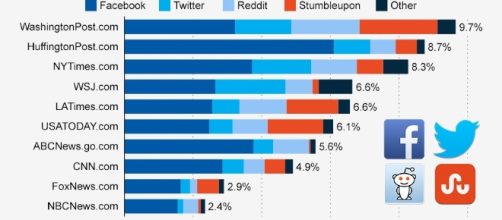The financial struggles remain for media companies needing to find a successful business model. As the News ecosystem continues to evolve, sources are abundant today. Aside from current pressures, the latest report from the Data & Society Research Institute finds Young Adults and teens to have low levels of trust for the news media.
“If I don’t see it on social media, I’m not going to hear it.” https://t.co/2kDp3QeuXk
— Nieman Lab (@NiemanLab) March 2, 2017
Since the old days of the successful commercial enterprise, the media has been trying to survive while sinking in quick sand.
The arrival of the internet started the gradual downfall while social media and smartphones drastically changed how audiences consume news online.
This analysis is titled “How Youth Navigate the News Landscape” and was funded by the James L. Knight Foundation. The aim was to explore and analyze news consumption behavior particularly on social media and on mobile platforms.
Across all of the groups that participated in this study, most of them expressed are a real lack of trust and a bias about how current events are reported. The following are excerpts from the report and themes identified:
- “Teens and young adults expressed widespread skepticism about the news and assume that much of the information they encounter may be inaccurate or biased.”
- “Teens and young adults often consult multiple news sources to verify the stories they encounter.”
- “A news source is considered more credible when its biases are known.”
Compared to the widespread use of the internet and mobile devices news was disseminated in a traditional manner.
It comes as no surprise that younger news consumers perceive news organizations with a higher degree of skepticism. Furthermore, unlike before anyone with a mobile device can now report the news without any filtering or editing.
Social media as a news source and platform of dissemination of content
The media has been reshaped by mobile and social media forces.
They are both fierce platforms that are taking away business and growing exponentially on the financial side of things.
The previously mentioned report also confirmed that news for younger generations is consumed on social media platforms. Facebook has a large hub of users and information shared on it. Then again you also have YouTube, Twitter, Reddit, Snapchat and LinkedIn that also happen to share various types of happenings.
In spite of all of the novelties and innovation, these platforms have been susceptible to fake news outbreaks. The American electoral process featured an unprecedented trend of growing fake reports. And because social platforms are not media outlets events go viral as an unfortunate consequence.
Takeaways and conclusions
One crucial takeaway is when trying to consume or share news it is hard to identify the original source. This means that trustworthiness of the information can be compromised and sharing false news can have a devastating impact on so many levels. Nevertheless, a Pew Research Center (PRC) report found that social media and news websites are the most common gateways to news online.
It is striking to see that in a short time social media has grown so much.
The report is based on findings gather from six exploratory focus groups (52 teenagers and young adults) from the following cities: Philadelphia, Chicago, and Charlotte.

